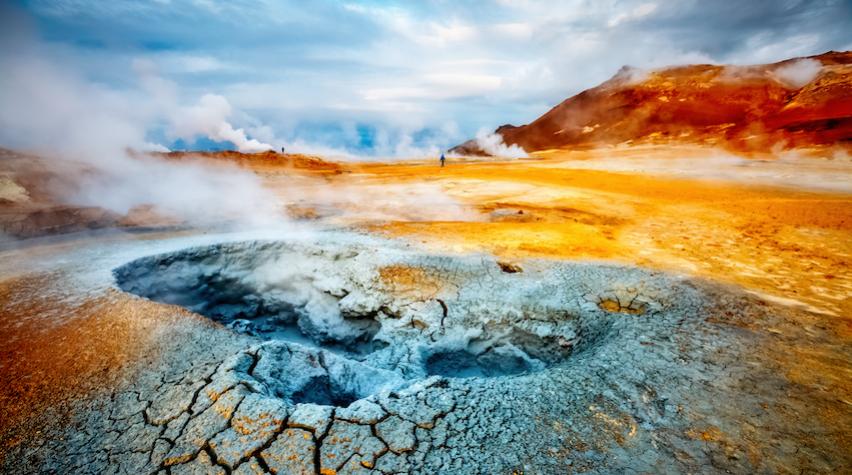
Solar, wind, and hydropower — the heavy hitters of renewable energy — are becoming increasingly common. Solar panels cover rooftops, wind turbines line highways, and hydroelectric dams cut across rivers. These energy sources are increasingly visible, yet renewable energy comprises only 20% of the power supply in the U.S. (1). Critics of renewable energy sources are quick to bring up their intermittency; the energy grid cannot only supply power during periods of sun and wind. Focusing on only one renewable energy source at a time implies that any green energy system would be as erratic and inconsistent as Mother Nature. Diversifying renewable energy sources is vital.
For decades, renewable energy sources entirely separate from the “big three” have been reliably and sustainably delivering power to society. Here are two renewables that might be critical to making energy grids more sustainable.
Tidal energy
The oft-forgotten tidal energy is absent from many lists of renewable energy forms. Tidal power extracts energy from the ocean’s natural tidal cycles (2). Unlike wind and solar, tidal power is consistent and predictable, and different systems can be fitted to match a location’s geography. In the case of tidal stream systems, turbines placed in shallow shoals along coastlines rotate as currents pass through them.
Although tidal stream energy systems can potentially disrupt tidal flows, the slow flowrate of tidal currents through the turbines and careful consideration during installation can decrease the threat to sea life. The first commercial-scale tidal stream system, the Strangford Lough Tidal Turbine in Northern Ireland, began operation in 2008.
Barrage systems
Barrage systems and tidal lagoons also harness energy from tidal currents, but are built into the coastline. A dam, called a barrage, spans the mouth of a bay, a tidal river, an estuary, or, in the case of a tidal lagoon, an artificial bay. The barrage’s turbines rotate as tidal currents move in and out of the body of water. Many such systems are operational worldwide, with the largest being the Sihwa Lake Tidal Power Station in South Korea.
Each type of tidal power system poses different threats to coastal ecosystems; aesthetic concerns have also slowed investment. Naturally, communities want to protect coastlines for recreation, while developers looking to build on high-value coastal real estate often resist projects that could reduce their return on investment. Therefore, development worldwide has had the most success in countries with large expanses of undeveloped coastlines, like the U.K., France, China, and South Korea.
Geothermal energy
Below the Earth’s surface lies an endless supply of thermal energy emanating from the Earth’s core (3). Geothermal power plants require far less land than wind, solar, or fossil fuel power stations, and they release a fraction of the lifetime greenhouse emissions of other renewables. Geothermal energy remains a largely untapped resource, making up only 0.4% of the U.S. total energy output, even though some proven geothermal technologies have been operating for over a century.
Low-temperature geothermal energy is accessible almost anywhere, and, although it is ideal for heating homes and greenhouses, this energy is unsuitable for power generation. On the other hand, high-temperature geothermal energy can be used to generate electricity (in addition to heat) in dry steam and flash steam plants — two common geothermal power station models. In dry steam plants, a pocket of heated steam in the Earth is tapped directly and used to turn turbines on the surface. The Geysers complex in California is the only dry steam plant in the U.S., but it supplies nearly a fifth of California’s renewable energy.
In flash steam plants, water is pumped down to a heated area where it quickly evaporates. This heated steam is then used to turn turbines. In both cases, usable locations are restricted to regions with accessible heated subterranean pockets.
Environmental concerns hinder development, yet current work seeks to remediate the worst effects. Because dry steam plants tap into a single pocket of steam, a decrease in energy production over time is likely if energy extraction surpasses the replenishment rate. Heat pockets can be recharged with fresh water, but this can cause earthquakes and subsidence. Despite the challenges, a plant can operate indefinitely with proper management.
The next step
To mitigate climate change, power grids need to draw their power from more than one source. Diversifying energy grids begins by exploring the abundant resources that remain untapped. To do so will require an open scientific imagination in addition to technological ability. In many cases, the fundamental technologies already exist but need more research to make them sustainable. In other cases, the discipline is in its infancy. Any energy grid can be made more sustainable, but accessing these energy reserves must first be deemed a priority.
This article originally appeared in the "Emerging Voices" column in the March 2023 issue of CEP. Members have access online to complete issues, including a vast, searchable archive of back-issues found at www.aiche.org/cep.
- U.S. Dept. of Energy, “Renewable Energy,” www.energy.gov/eere/renewable-energy, Washington, DC (2022).
- U.S. Energy Information Administration, “Hydropower Explained: Tidal Power,” www.eia.gov/energyexplained/hydropower/tidal-power.php, Washington, DC (Aug. 2022).
- Turgeon, A., and E. Morse, “Resource Library: Geothermal Energy,” National Geographic, https://education.nationalgeographic.org/resource/geothermal-energy (May 2022).


